Standing on the ramp of a C-130 in the dead of night, at 5,000 feet, in thick clouds over the Indian Ocean 12 miles east of the Horn of Africa, Terry Houin and his five teammates, all part of a secretive intelligence unit within the US Navy SEALs, strained to see the warships floating in the chop below.
Neither the guided missile destroyer USS Bainbridge nor the frigate USS Halyburton, part of a task force deployed to curb rampant piracy in the region, had experience retrieving operators out of the open ocean. The ramp was down and the jump light red. A Special Tactics airman still had the ship’s crew on the line, talking them through the mechanics of plucking these four SEALS and two airmen out of the cold water.
Thirty seconds out, all Houin could think was They’ll figure it out. There was no other way to think about it. Then, the jump light went green. Lights from the ships below were just barely visible in the pea soup conditions. Then, the jumpmaster called it, and Houin and his teammates were off, in free fall, screaming toward the most hostile stretch of water on earth.

That morning, Houin and his small team of SEALs had been laid up in a hotel in sub-Saharan Africa when the phone rang. “Turn on the news,” said a voice from headquarters. Somali pirates had taken the cargo ship Maersk Alabama and had forced its captain, Richard Phillips, into a lifeboat now steaming toward the east African coast.
Cable news broadcast the story around the world, full of breaking details. An AK-47 was “pressed to the captain’s back,” according to CNN. USA Today ran the developing hostage situation on its front page. The White House, the voice on the phone told Houin, was planning a press conference. The hijacking of the Maersk Alabama was the first successful pirate seizure of a US ship since the 1820s — and the whole world was watching.
For the SEALs of the Naval Special Warfare Development Group, often abbreviated to DEVGRU, the situation presented something like a return to its founding mission: maritime hostage rescue on hairbreadth notice. This mission wasn’t just what DEVGRU operators were trained to do. This was why they were created.
Houin, who retired from NSW as a master chief in 2018, can’t say what he and a small band of SEALs, airmen, and “agency guys” were doing in Africa. But as the closest operators to Somalia, they were the ones in free fall just a few hours later.
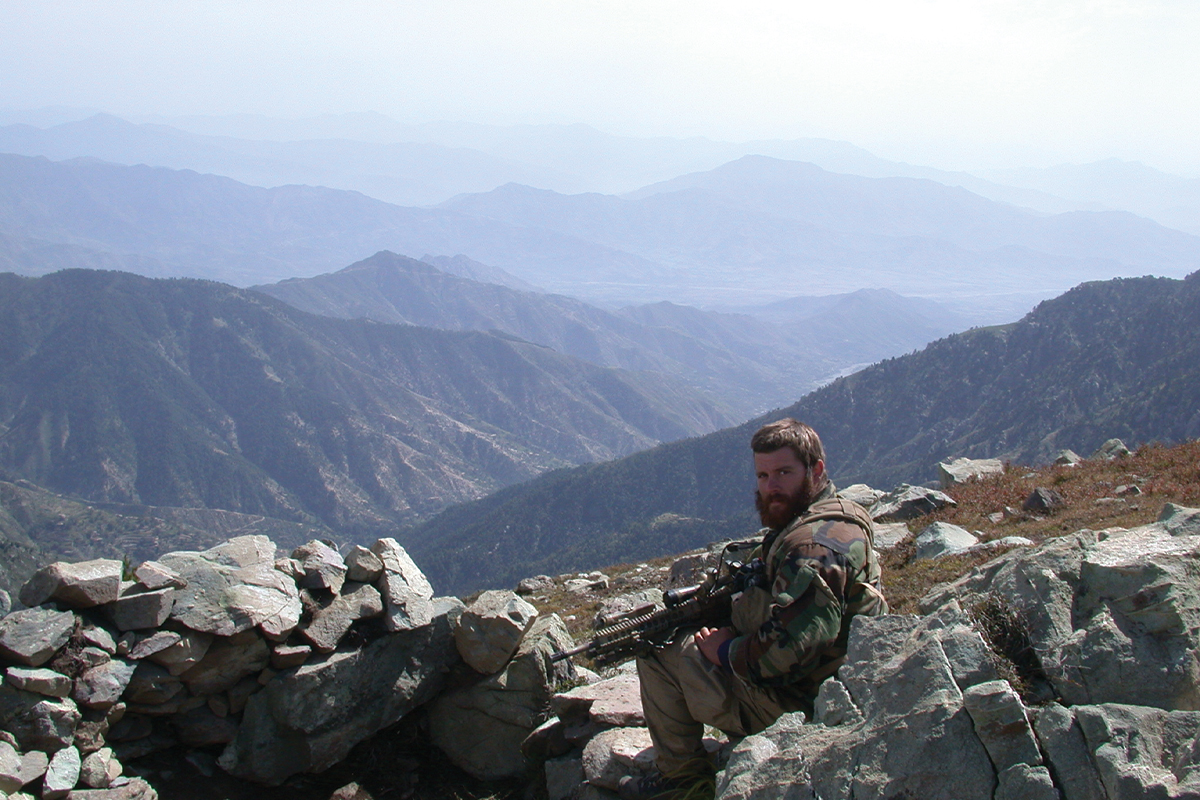
In April 2009, when the pirates grabbed Phillips, there was no water on the planet worse than the Indian Ocean off the east coast of Africa. In the ’00s, a few men in a skiff with AKs launched from the Somali coast could take a tanker or cargo ship without much resistance. The ship’s owner or insurance company would often wire a few million US dollars to the controlling Somali warlords in Mogadishu, and the fishermen-turned-pirates would return to their coastal villages in their salt-beaten skiffs. The Maersk Alabama hijacking, and the SEALs like Houin who jumped in to stop it, would change all that forever.
Aboard the Bainbridge, Houin and team, which included Lt. Cmdr. Jonas Kelsall, went to work. With Bainbridge’s Cmdr. Frank Castellano, they came up with a simple plan: Get the pirates seasick enough that they’d need fresh air and step out the enclosed lifeboat hatch or pop up in portholes. With three heads up and visible at the same time, team snipers could dump them with synchronized fire like a life-or-death game of whack-a-mole. It was essential to kill them fast, and at the same time, so no dying pirate could harm the American hostage, bound up just a few feet away in the confined lifeboat.
The Bainbridge began the plan by positioning itself to float the lifeboat in its wake — roiling in its whitewater chop. The Halyburton launched two SH-60B Seahawk helicopters to further push the boat around with prop wash. Soon the pirates were complaining of the heat, the lack of food, the lack of cigarettes, and the lack of khat — a plant-based opioid-like chew they were hooked on.
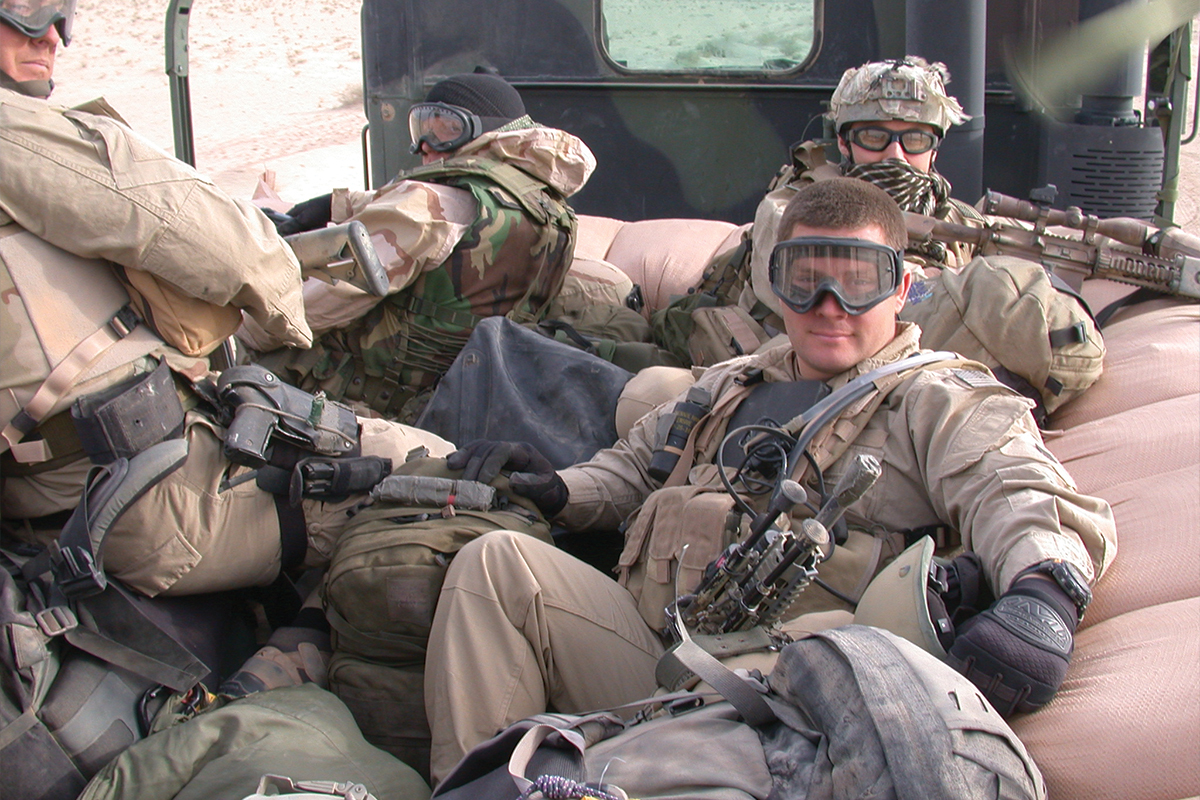
When Houin was patched through to command, they asked him what he needed. “I told them it was mostly under control,” he remembers. “I just needed a few snipers. But they sent a whole troop. I knew they’d send a whole troop.”
By the time Red Squadron jumped in and took over Houin and Castellano’s plan a few days later, the pirates were sick. Houin walked to the fantail, his rifle slung to his chest. “On a ship, you can tell when something is about to happen,” Houin told me. The lifeboat was under tow now and less than 100 yards from the snipers on the fantail. It was almost midnight, and under NODs and prone, Houin found the temple of the Somali sitting in the pilothouse with his laser. The pirates had punched out the windows for air. He settled into his night optic device, into his part of a hostage rescue that would go down in SEAL team lore — if not world history — as the most daring maritime hostage rescue of all time. Books would be written about it and movies made. Yet for Terry Houin, the master chief who retired with more than 26 years in the teams and 17 years in DEVGRU, Captain Phillips was just another mission in a lifetime spent fighting terror.
Terry Houin is 5 feet 6 inches of stocky build with brown hair, brown eyes, and the characteristic unkempt beard of a retired operator. That’s about where the Navy SEAL character-typing ends. He is quiet, soft-spoken even. His arms are not inked from watchband to shoulder. When I met him at a Total Archery Challenge event in San Antonio — introduced by a mutual friend because “you’re both eaten up with turkey hunting” — he didn’t tell me what he did. When I asked, his answers were clipped.
“Veteran?” I asked.
“Yes.”
“Army or Navy?”
“Navy.”
“How long?”
“Long time.”
Then he’d open up his phone to show me a picture of an elk or some other dead critter, and off we’d go, talking about hunting.
But more than once, a curious thing happened.
As I was standing around in the tents at TAC, bullshitting with Houin, a Navy SEAL from central casting would walk up — or so I assumed. These guys were young, tall, hair gelled, ripped as fuck, tattooed, walking fast, talking fast.
If they weren’t operators, maybe they were UFC fighters, I thought.
“Sir,” one of them said, extending a handshake toward Houin, “it’s an honor to meet you, sir.”
“When I met him, I instantly started busting his balls ’cause he’s the only SEAL I’ve ever met shorter than me. Then our mutual friend pulled me aside and was like, ‘You know he’s kind of a legend, right?’”
Two or three guys approached him like this — savage-looking humans, shocked into a kind of respectful formality at the sight of Houin, who by my estimation looked sort of like a fit soccer dad (he’s a swim dad, I would later learn), the type of middle-aged guy you’d stand behind in line at Home Depot and not think much of. Bob Vila, maybe, if Bob Vila were into CrossFit.
Later, I found my friend who’d introduced us.
“Who the fuck is this Terry guy?” I asked him.
“Dude,” he said. “You have no idea.”
Houin grew up in Indiana. His grandparents had a dairy farm. His dad served in Vietnam, running a cadaver dog in the Army. “I wish I talked about it more with him,” Houin says. “I think all that death and destruction kind of shied him away from guns.”
At 15 years old, over Thanksgiving weekend, Houin went deer hunting with his friend, Jimmy, carrying his dad’s ancient bolt-action 16-gauge shotgun — one of the few guns in the house. In the late 1980s, the Midwest wasn’t so filthy with whitetails as it is today.
To see a deer or a turkey was a big deal, let alone to get one. The boys trespassed into a neighbor’s field. Houin climbed a big oak tree and got set up on a branch, while Jimmy ventured out for a walk. “The tree is on a hill, and I’m lying on this branch, and look behind me, and level to me on the hill is a deer,” Houin remembers. “I’m like, Shit! A deer!” The old shotgun had a bead up front and a dovetail rear sight. He lined it up to center mass on that little whitetail and — boom.
“I couldn’t believe I hit it.”
He was hooked.
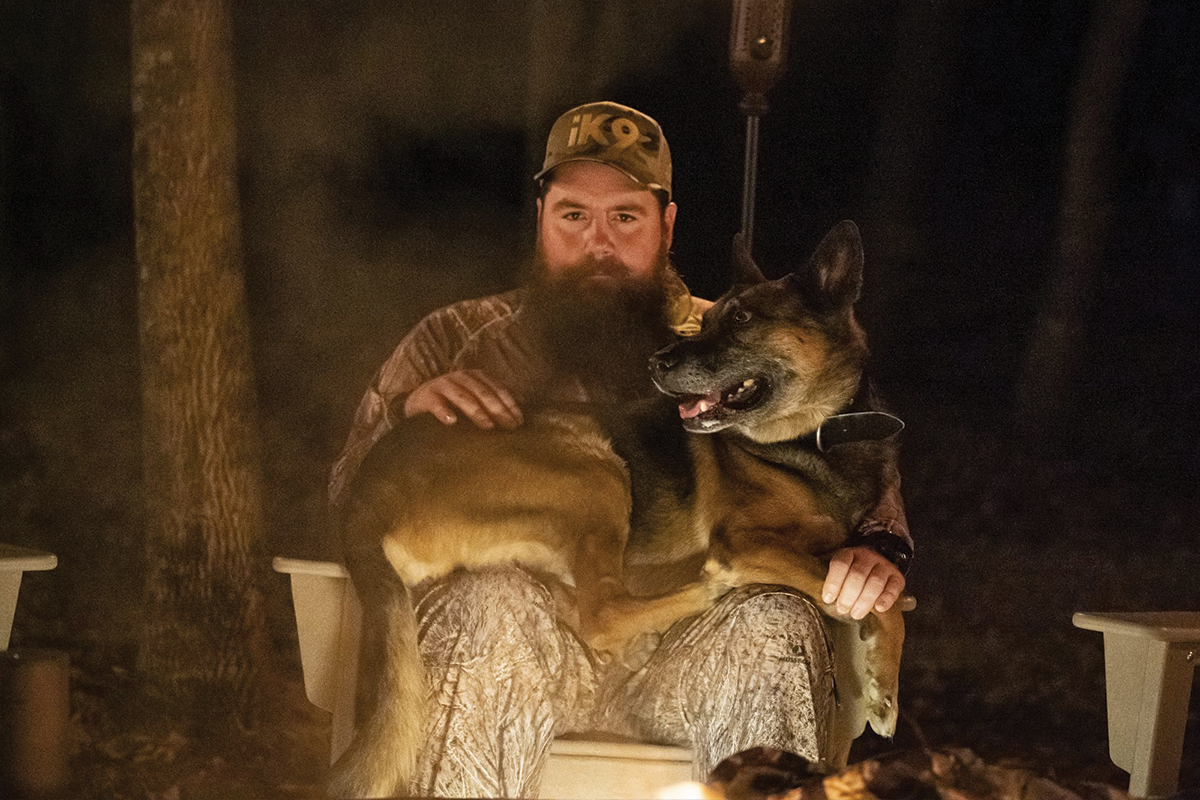
They took the deer back to his buddy’s shop and stood over it with his dad. “We didn’t even know how to gut it,” Houin says. But he was hooked. That Christmas, his dad gave him a Golden Eagle bow. When Houin graduated high school in 1991, that bow was with him in his senior picture — Houin all wide-eyed, rocking a mullet, bow in hand.
Not a great student, Houin made up for it in the pool. He was a good swimmer, an excellent all-around athlete. “A friend of mine growing up, his family always went on vacations scuba diving, trips to Florida and the like. He’d tell me all about diving, showing me pictures, and I thought, Man, I want to learn to scuba dive.”
After high school, he worked as a mason’s apprentice in town, laying block foundations. One day he had an epiphany. If he didn’t do something to get out of Indiana, this would be it. He’d wake up one day, a 50-year-old mason. There was nothing wrong with that, in his 17-year-old mind, but it wasn’t a path to diving shipwrecks in the Gulf of Mexico. He went down to the Navy recruiter the next day and told him he wanted to be a diver. “Like a typical recruiter, that guy dug right in,” Houin remembers.
“So, you want to be a diver?” the recruiter asked.
“Yes, sir,” Houin said.
“You like guns?”
“Yes, sir.”
“And hunting?”
“Yes, sir.”
“You want to blow shit up?”
“Yes, sir!”
“You want to jump out of airplanes?”
“Yes, sir!”
“Well,” the recruiter said, pushing back from his desk and pointing to the wall, “take a look at that.”
It was a poster of the US Navy SEALs — five frogmen in the surf, in boonie hats, with porn star mustaches, carrying M16s with grenade launchers, rising out of the water, silent, deadly, professional. Houin hadn’t even heard of the Navy SEALs, let alone thought of becoming one. But goddamn, did that poster look badass.
There was no talk of boot camp, or BUD/S, or workouts. “No one told me how 85% of people never make it through, about how if you drop out, you’re going into some shitty job in the Navy chipping paint. I had no idea of the reality of what I signed up for. I hadn’t a clue.”
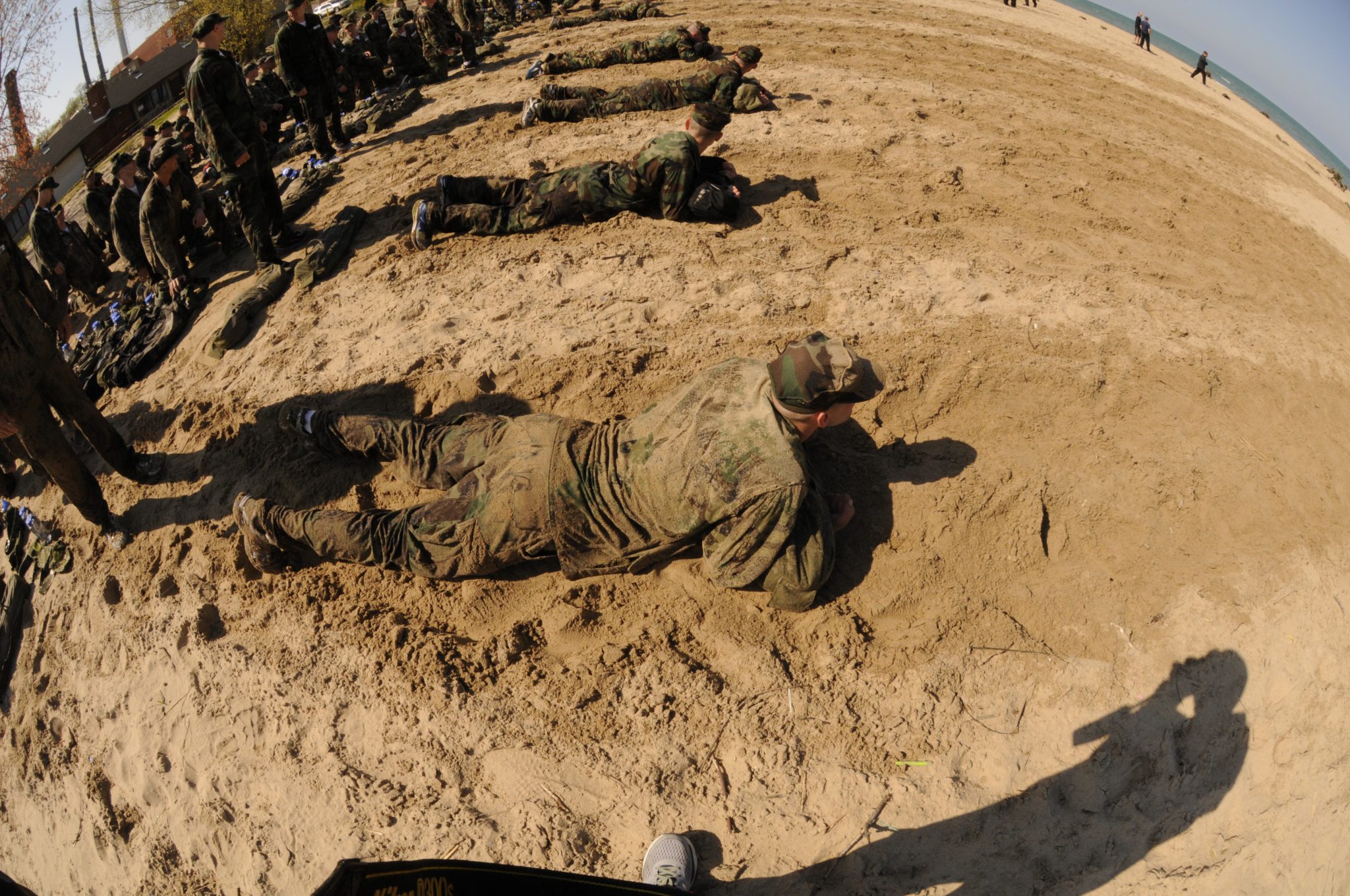
In boot camp, he plugged into the Navy Diver Program. It was voluntary workouts at the beginning or end of the basic boot day for those who wanted to go to UDT or SEAL training. Houin walked into the gym on base in Orlando that first morning, and there was the lead SEAL from the poster in his recruiting office, Ron Jeremy mustache and all. He was there to help coach up the new boots who wanted to make it in special operations. For Houin, it wasn’t just the SEAL from the poster but the first flesh-and-blood Navy SEAL he’d ever met.
“Hey,” Houin said. “I know you.”
“Yeah,” the big SEAL shrugged. “Everyone knows me.”
Everyone knows Terry,” says Brandon Tucker, who served in SEAL Team 4. We’re sitting around a campfire in Texas.
Houin stayed in touch with me after TAC, texting about archery tackle and rifle builds. It was October now, and he invited me to a deer camp in Texas. There were a handful of new hunters in camp whom Houin wanted to coach into their first deer. Houin is bad at talking about himself and bad at talking up his friends. It was only on the third or fourth night talking to Tucker around that campfire that I realized who I was sharing camp with — four Navy SEALs, five if you count the retired attack dog, a Marine scout sniper, and the World’s Strongest Man.
“Terry doesn’t talk about what he did,” Tucker tells me. “When I met him, I instantly started busting his balls ’cause he’s the only SEAL I’ve ever met shorter than me. Then our mutual friend pulled me aside and was like, ‘You know he’s kind of a legend, right?’”
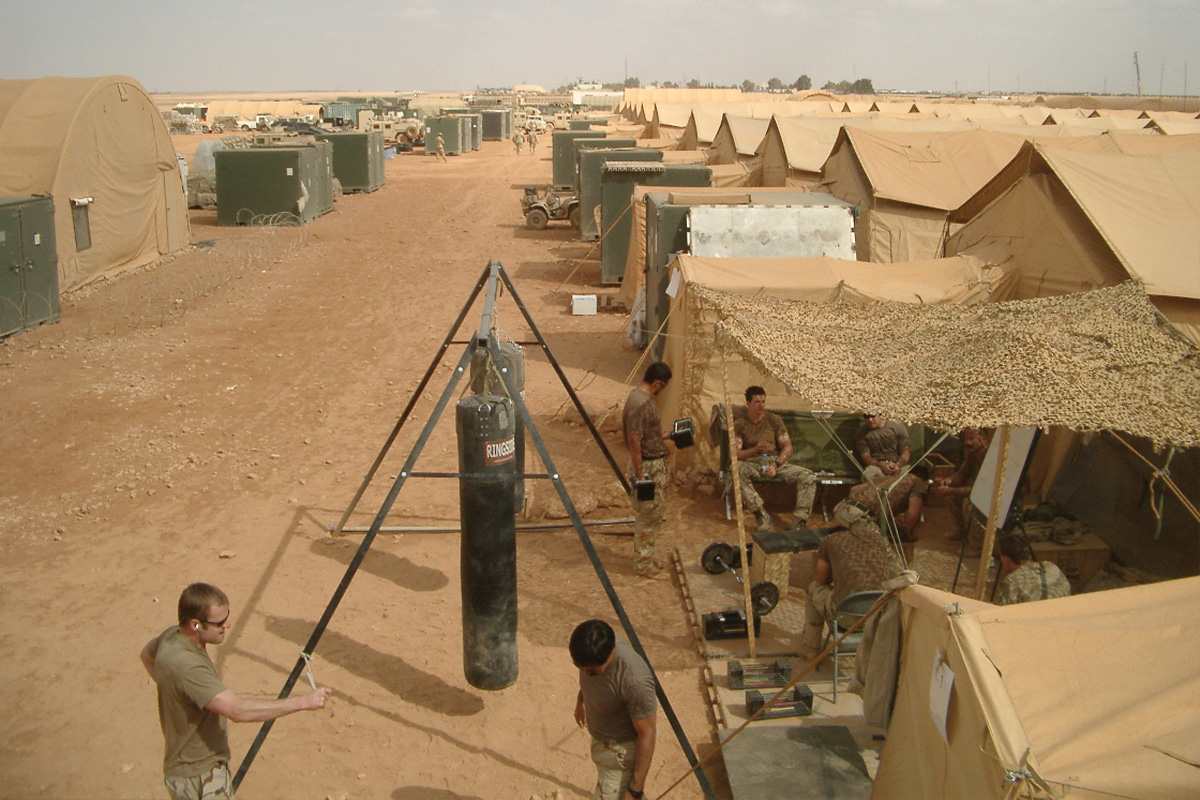
In the SEAL community, Houin has become something of a counselor for younger guys, like Tucker, who get out and want to transition into a career in the outdoor industry. When Tucker started thinking about his own transition out of service and into the outdoors, Houin was his first call. Tucker landed at a wildlife habitat company in the Dallas area. He has since pushed out to start his own business.
This kind of career and life counseling has become something of Houin’s new mission post-service, especially for SEALs who want to make it in hunting and fishing, but if you ever called him a “career and life counselor,” he’d probably make a dick joke. He’s tailor-made for the new job, in a way, because his transition out of the SEALs was not easy.
“An operator is like a race car living in the red zone, all the time, throttle down, high RPMs,” Houin tells me. “Problems happen when you’re conditioned to that — I spent my entire adult life until recently like that — and then you’re thrust back into civilian life. Slowing down is not easy.”
The early morning boot camp workouts with the calendar SEAL paid off.
In BUD/S, Houin excelled and was named the Honor Man of Class 189. With that, he could pick his assignment and jumped at a chance to join SEAL Team 4 in 1993, three years after Operation Just Cause, the US incursion into Panama where Team 4 swam underwater on rebreathers and attached C4 to Manuel Noriega’s gunboat, the Presidente Porras, in the first disclosed combat diver mission since World War II. For a kid who wanted to be a diver, joining the SEALs in the ’90s was like getting drafted onto the Chicago Bulls.
When Houin arrived in dress whites on the quarterdeck at Virginia Beach, the place was empty. Not including support staff, there were about 100 active-duty SEALs per team in those days, and they were spread thin over training and leave. A salty-looking old guy walked by, stopped, and looked over Houin top to bottom.
“What the hell are you doing?” the old sailor barked.
“Sorry, sir. I’m actually from the new; I mean, I’m checking in.”
That’s when Houin caught his name. This was the command master chief.
“Like fucking hell you are!” the master chief howled. “Follow me.”

They went into his office and sat down. The old sailor lit into him — a 15-minute lecture on what it means to be a SEAL, what’s expected of them, what the process would look like spinning him up, who he’d be working with, how the training would unfold, when the Trident Board might happen.
“And one thing to always fucking remember,” the master chief said. “We work, and we drink, but we never drink and work, and we never work when drinking.”
“Yes, sir,” Houin said.
With that, the master chief got up and closed the office door. He reached into his desk and pulled out a bottle of whiskey. He poured two shots and handed one to Houin.
“Welcome to Team 4, son.”
The op tempo was fast. Training stateside was followed by deployments to South America, training SEAL counterparts in allied countries. There were some tense moments with budding narco activity in Colombia and elsewhere, but no actual missions. No gunfights.
In 1997, when he was back stateside on rotation, Houin got into sniper school. For Houin, it was more than just getting a rare spot. It’s what he’d wanted to do since that morning in Indiana in the oak tree with the whitetail on the hillside.
“I liked to hunt,” he says. “I liked the outdoors. I liked individual work. This was hunting. Sniping was hunting to my mind.”
The following year, 1998, Houin was up for reenlistment when a platoon chief recommended he screen for Development Group.
“I didn’t know much about it,” Houin says. “It was thought of then as just the next level, a rung on the career ladder. And my fiancée at the time, now my wife, her attitude was ‘I’m staying in Virginia Beach. So, even if you get out, we’re staying here.’ If I was going to be in Virginia Beach, I might as well take the next step.”
“Yet even with a cemented pop culture image as America’s very best, most people who haven’t served as or with SEALs don’t understand how the teams work.”
The Sept. 11 attacks, Iraq, the overall Global War on Terror, plus the seemingly unending stream of Navy SEAL books and movies, have thrust the community into popular culture. Pull a guy off the street, and they’ll tell you SEALs are the preeminent American warriors — the professionals we send to do bad things to very bad people. Army, Marine Corps, and Air Force counterparts bristle at this popular “best of the best” mythology around SEALs. (“They hate us ’cause they ain’t us,” one SEAL told me at deer camp in Texas.) Yet even with a cemented pop culture image as America’s very best, most people who haven’t served as or with SEALs don’t understand how the teams work.
The US Navy SEALs are part of Naval Special Warfare Command. NSW has four groups. Groups 3 and 4 are submersible and boat teams that support SEALs. Groups 1 and 2 are the SEALs proper. Group 1 operates out of Coronado, California, and is home to the four West Coast SEAL teams, the odd numbers: Teams 1, 3, 5, and 7. Group 2 operates out of Little Creek, Virginia, and houses the even-numbered East Coast teams: 2, 4, 8, and 10.
Each team is composed of eight or nine 16-man platoons. A platoon consists of two junior officers and 14 enlisted men. Depending on the mission set, a platoon is often structured into eight-man squads or four-man fire teams, or two-man sniper-reconnaissance teams.
A DEVGRU candidate must be a Group 1 or Group 2 SEAL in good standing who has served in two platoons and has served at least five years to screen for the unit. In the old days, when Houin came up, getting into that pipeline required letters of recommendation from team command, but after 20 years of fighting terrorism, the pipeline is now “much more formal,” he says. Beyond that, Houin is circumspect on anything DEVGRU, even though much information about its workings is public record.
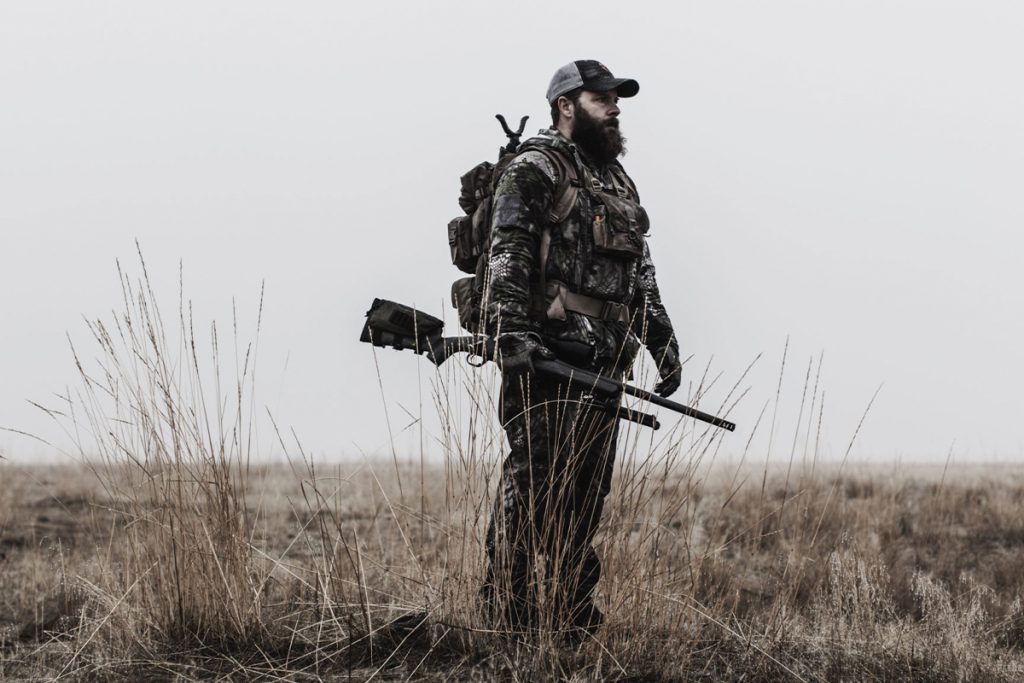
Unlike the other SEAL teams, DEVGRU is part of the US National Mission Force. This means they’re not confined to a distinct geographic region. DEVGRU is commanded not by Big Navy but by the Joint Special Operations Command, or JSOC, which runs the world’s most critical — and classified — military actions. JSOC commands all the military’s Tier 1 units, from all branches of service, including the Army’s counterterrorism unit that many “in the know” refer to simply as The Unit; the 75th Ranger Regiment’s Regimental Reconnaissance Company; a shadowy joint intelligence outfit that no one knows much of anything about; and the Air Force’s 24th Special Tactics Squadron. JSOC operates as a sub-unified command within the United States Special Operations Command, or SOCOM. That means it’s simultaneously both in and outside SOCOM, reporting directly to the president in many situations. These units often worked together in the Global War on Terror, in what can be thought of as blended interservice task forces — deployable globally on a few hours’ notice. The best read on how JSOC was formed and works is Relentless Strike: The Secret History of Joint Special Operations Command by Sean Naylor.
For a SEAL, entry into this elite fraternity involves a six-month training and selection process known as Green Team.
“If you want to think in comparisons,” Houin says, “think of BUD/S. BUD/S answers a fundamental question: Does the student or candidate have the mental and physical capacity to be a SEAL? That’s all it’s trying to solve. Then a SEAL goes to a team. They learn to do a job. Are they good at it? That’s found out pretty quick. Green Team then answers a different question. We know they can do the job. Just being there means they were a good SEAL, but how good? How fast? Can they do hypercomplex, high-level action, high-level problem-solving, quickly, under immense stress? Can the SEAL work with a 10x speed factor and a 10x stress factor?”
Every discipline a SEAL is required to master is drilled in Green Team as if they’ve never done it before. Close quarters battle, or CQB, is primary, at shoot houses in Dam Neck, Virginia, and private shooting complexes. There’s complicated jump work — high altitude, low opening, day and night — into urban environments and the sea. Skills are taught and character assessed. The cadre, Houin says, are looking for character flaws, looking for ways to weed guys out who are already, in every respect, elite.
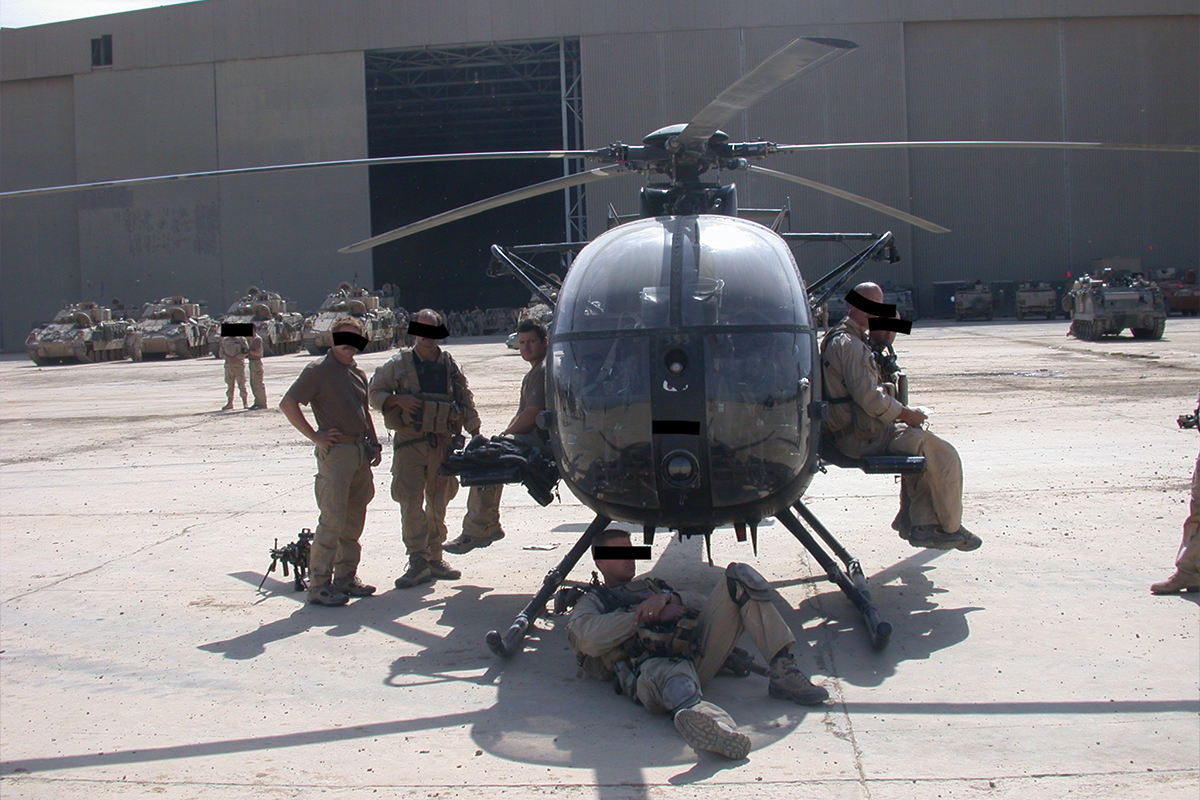
In 1998, when Houin was in Green Team, the No. 1 focus was hostage rescue. Like the Sony Walkman and Gordon Gekko, this was 100% a product of the 1980s.
In November 1979, when 52 American diplomats and citizens were taken hostage in the United States Embassy in Tehran by a group of Iranian college students, the world saw the need for a professional strike force to save American lives. The rescue mission, code-named Operation Eagle Claw, was ultimately a failure and ended with a midair collision that killed eight Americans. The hostages were eventually released by the Iranians, ending the 444-day crisis, and soon after, the Joint Chiefs of Staff launched an investigation into how things went so wrong.
The resulting Holloway Report pinned the failure on a Defense Department-wide deficiency in mission planning, command, and control between the various service branches. SOCOM was born of this finding and went operational in April of 1987. (It also prompted the creation of the 160th Special Operations Aviation Regiment, or SOAR, aka the Night Stalkers, who specialize in low-level, high-risk night flights and are, without doubt, the very best helicopter pilots in the world.)
While the national head shed still stewed on the embarrassment that was the Iranian hostage crisis, the cruise ship Achille Lauro was hijacked by four men off the coast of Egypt Oct. 7, 1985. The Palestinian terrorists killed a 69-year-old American of Jewish descent and threw him overboard.
The need for an elite maritime hostage rescue team was now clear.
With the founding of SOCOM in 1987, the Naval Special Warfare Development Group began with the core missions of antiterrorism, especially hostage rescue, and the development of new technologies and tactics for future generations of warfighters across the US military.

DEVGRU is like a world unto itself. For an aspiring Tier 1 operator, the curtain isn’t fully drawn back until the completion of Green Team. When candidates reach that end, they’re drafted into one of four assault squadrons designated by color: Gold Squadron, Silver Squadron, Red Squadron, or Blue Squadron.
There is also a fifth, Black Squadron, which does intelligence, reconnaissance, and surveillance work for the teams in conjunction with wider US intelligence-gathering efforts. Little is known about Black, and Houin wouldn’t talk about it. Many believe it is a rough equivalent of a shadowy US Army special operations intel unit that has gone by intentionally vague names like Intelligence Support Activity and Mission Support Office — a unit where intelligence-gathering and espionage bleed together to produce actionable intelligence for the capture or killing of America’s fiercest and most capable enemies. To make Black, a SEAL needs to serve several years in a leadership position within the other color squadrons.
Houin was selected for Gold Squadron.
The initiation was even more shocking than an old command master chief with a bottle of whiskey.
At DEVGRU HQ in Dam Neck, Virginia, there’s a four-story live-fire shoot house. At this point, Houin had spent five years with Team 4 and had been on several deployments. The guys of Gold Squadron suited up to run the house with their newest members.
The bell went off, and the assaulters moved in, breaching doors, clearing rooms, running down hallways, shooting and moving at a sprinter’s pace. “Oh my fucking god, this is fucking fast,” Houin remembers thinking. He had no clue what they were doing but tried to keep up.
“I knew right then I had stepped into the big leagues.”
“I knew right then I had stepped into the big leagues,” he tells me.
Speed was the battle drum to all their CQB work: faster, faster, faster, faster. Speed was security. Speed was safety.
As part of DEVGRU in the late ’90s, Houin deployed to Bosnia and did protection work for a four-star tour through the Caucasus states. The war work wasn’t yet as fast as the training, but that all changed on Sept. 11, 2001.
Houin was at the gym with his “recce” buddies — pronounced like “recky” and short for reconnaissance. Television news was on in the background, and they watched a replay of the first plane that hit the tower. Like the rest of the country, they thought it was one hell of an accident. When the second plane hit, they knew it was no accident at all. Then the pager of every SEAL in the building — if not the world — started beeping.
In the weeks following 9/11, operators fanned out around the world. Yet Gold Squadron’s first gig in this brave new world was like a step back in time.
Shortly after the World Trade Center attacks, Houin’s squadron deployed to Bosnia for the last of several special operations missions in the region to hunt down war criminals from the 1993-99 Bosnian War. They rotated home, then by July 2002, they set up shop in Afghanistan as part of the more significant hunter-killer force tracking Usama Bin Laden.
“Our mission set, who we were going after, was particular,” Houin says of that time. “We had something like the top five guys on our list. Anything outside them, we weren’t messing with it.”
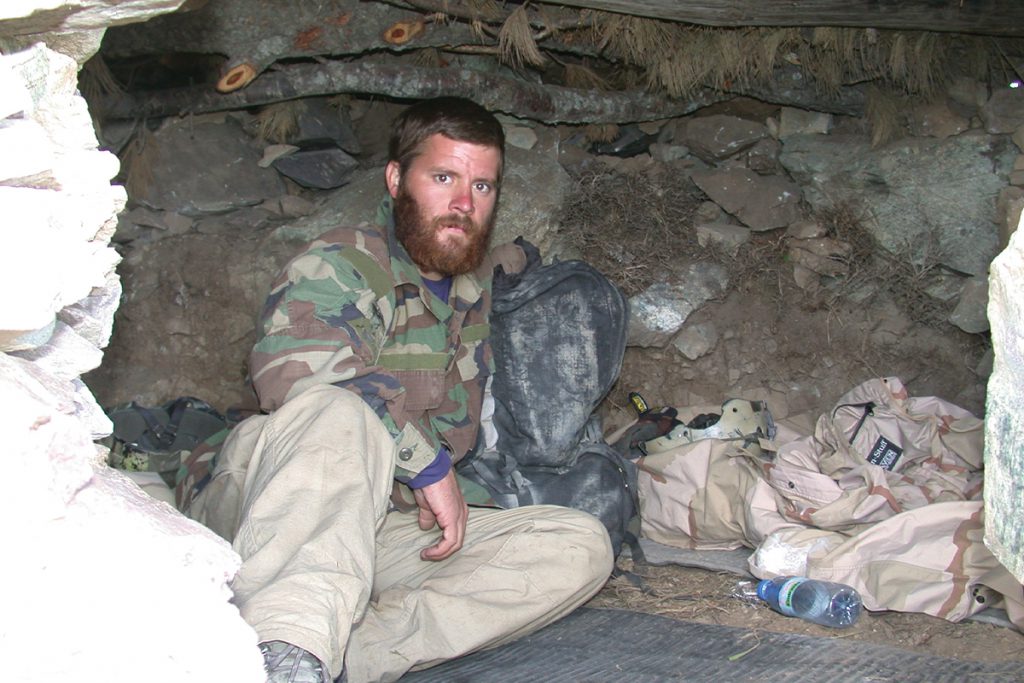
There were dry holes, false alarms on UBL and other hitters. Anytime word got out of a lanky 6-footer with a long beard in white robes, they moved.
“The first one we took off on, we’re a bunch of snipers hanging out the side of an MH-60, every one of us with our fucking balls up our ass, thinking, This is legit. At that point, we had already lost guys on Roberts Ridge. We knew the consequences of combat. So yeah, I was puckered up for that first one, the pucker factor is real, but by the 10th dry hole, by the 90th op, that adrenaline fades away. It becomes almost routine — stepping off helicopters and charging compounds. By the end, my pulse barely moved. Every team guy was like that.”
The real ass-kickers were those early mountain ops. The task force got word of a higher-up in al Qaeda dug into a mountainside. They had his pattern of life down. Every day, at the same time, he’d walk a ridgeline above the bunker to get satellite phone service to make a call. Sniper-reconnaissance teams were assembled to go up after him — to get him in the crosshairs after his morning call.
The Hindu Kush mountains in the northern highlands form a barrier that divides the northern provinces of Afghanistan from the rest of the country. Part of the Himalayan chain, some peaks rise more than 21,000 feet above sea level. It’s prevalent to find rural people living and working at 10,000 to 14,000 feet in the Kush — elevations in North America that are only ever trafficked by backpackers, mountaineers, and sheep hunters.
“We had no clue what we were getting into,” Houin says.
They drove to the base of the Hindu Kush and looked up. They had maps and knew where they needed to be — and that they’d get there by hiking at night and lying low during the day. “No big deal,” Houin thought.
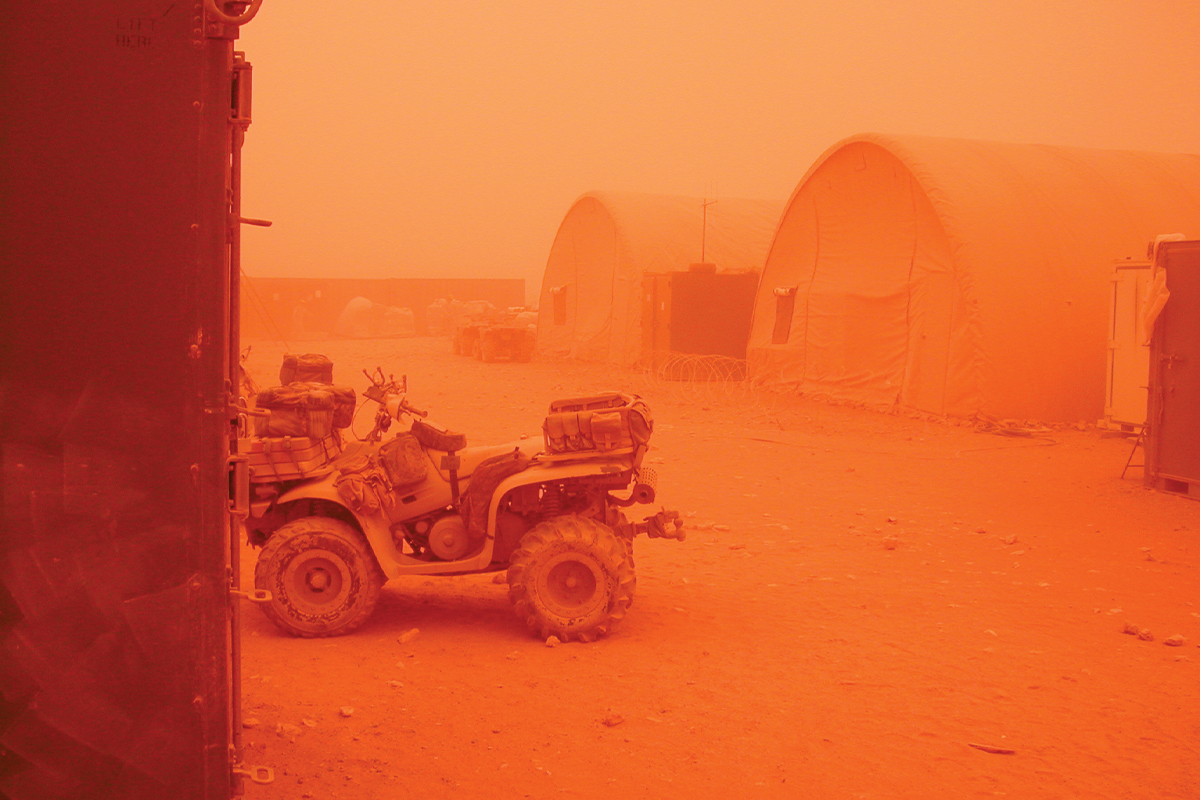
A teammate threw on his ruck and said, “Might take a few hours.” No big deal.
Two days later, they crawled into the overwatch and had eyes on the bad guy.
“We hadn’t yet figured out the gear,” Houin says.
“We had radios and computers and extra batteries and extra guns. I had my .300 Win Mag and an M4. My ruck probably weighed 90 pounds without water or food. The military rule of thumb was ‘two is one, and one is none.’ Well, that’s not ideal when climbing vertical mountains.”
Humping up and down those mountains became the pattern of life for Houin and his fellow snipers in recce. They’d get up the mountain, get set, then get called off target. Back at base, they retooled, ditched the unneeded gear, and went back up to get eyes on often the very same guy, but the word to take the shot never came.
On one layover on the trip up, they dug in as the sun rose in what Houin can only describe as a bit of rainforest around 10,000 feet. There were trees and vegetation. It was wet, warm, and cloudy, like 200 acres of paradise in an otherwise stone landscape of cliff faces. Houin closed his eyes, then they flashed open. Movement. “Something is fucking out there,” he thought and clapped his buddy next to him. There it was, flashing again low to the ground like some scene out of Predator.
The thing was moving in the trees now — there! — then on the ground again. “Are you seeing this?” Houin asked his teammate. He thought maybe he was hallucinating. They had just busted humps for 10 hours. As they lay there, smoked, the thing moved again. Then it popped out — an orange monkey. “Are you fucking seeing this?” Houin asked again. Then another monkey popped out. Then another.
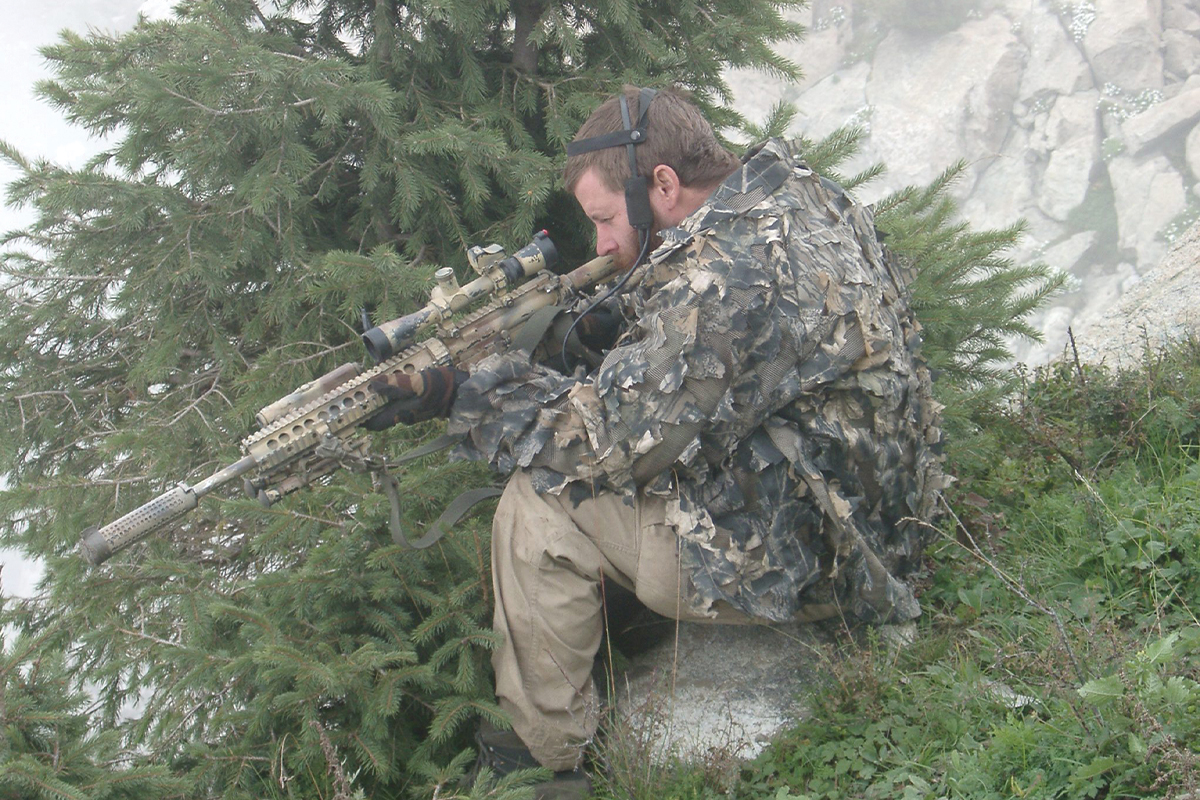
(Rhesus macaques or Macaca mulatta — small, orange, Old World monkeys — call Afghanistan, Pakistan, India, Southeast Asia, and parts of China home. In 2002, they were virtually unheard of in military circles. By 2012, the monkeys and troops were in such close contact The Washington Post ran a story with the headline, “Study: Monkey bites are the latest challenge in Afghan war.”)
“For a second there, I thought maybe we were drugged,” Houin says and laughs.
The snipers came to live in those mountains. The trips down became less frequent. When they ran out of food, they traded shepherd boys American $100 bills for bread. For a while, life came down to making one little pack of M&M’s last, Houin counting them out, doing starvation math: “I have nine M&M’s, and if I eat two an hour …” They ran out of water. “It was a steep learning curve,” he says, “but as an organization, we were learning.” As one sniper team came off the mountain, another would go up, and they’d transfer whatever was seen, heard, learned.
On what would be his last trip into the mountains, the plan was to hit a compound on the other side. Houin has a photo from that op. Houin was on overwatch high above the world, in a place where the peaks touch clouds, and below him MH-60s were swinging onto the target. It was a long way from Indiana, a long way from Coronado. In hindsight, the image is almost calming now, knowing what was to come with Houin’s first deployment to Iraq.
In Iraq in 2003, Gold Squadron worked hand in hand with Rangers and Marines during the invasion — guys he’d come to know and respect, despite much interservice fucking around.
Houin and the team were operating in and around Nasiriyah in March. “Weapons of mass destruction” was the buzzword in the military and on the news. Gold Squadron poked around for chem-bio operations in the region. But the mission changed after Iraqi soldiers ambushed a convoy from the US Army’s 507th Maintenance Company and the 3rd Combat Support Battalion after the unit made a wrong turn at a crossing on the Euphrates northwest of Basra. Eleven US soldiers were killed, and six were captured, including Private 1st Class Jessica Lynch.
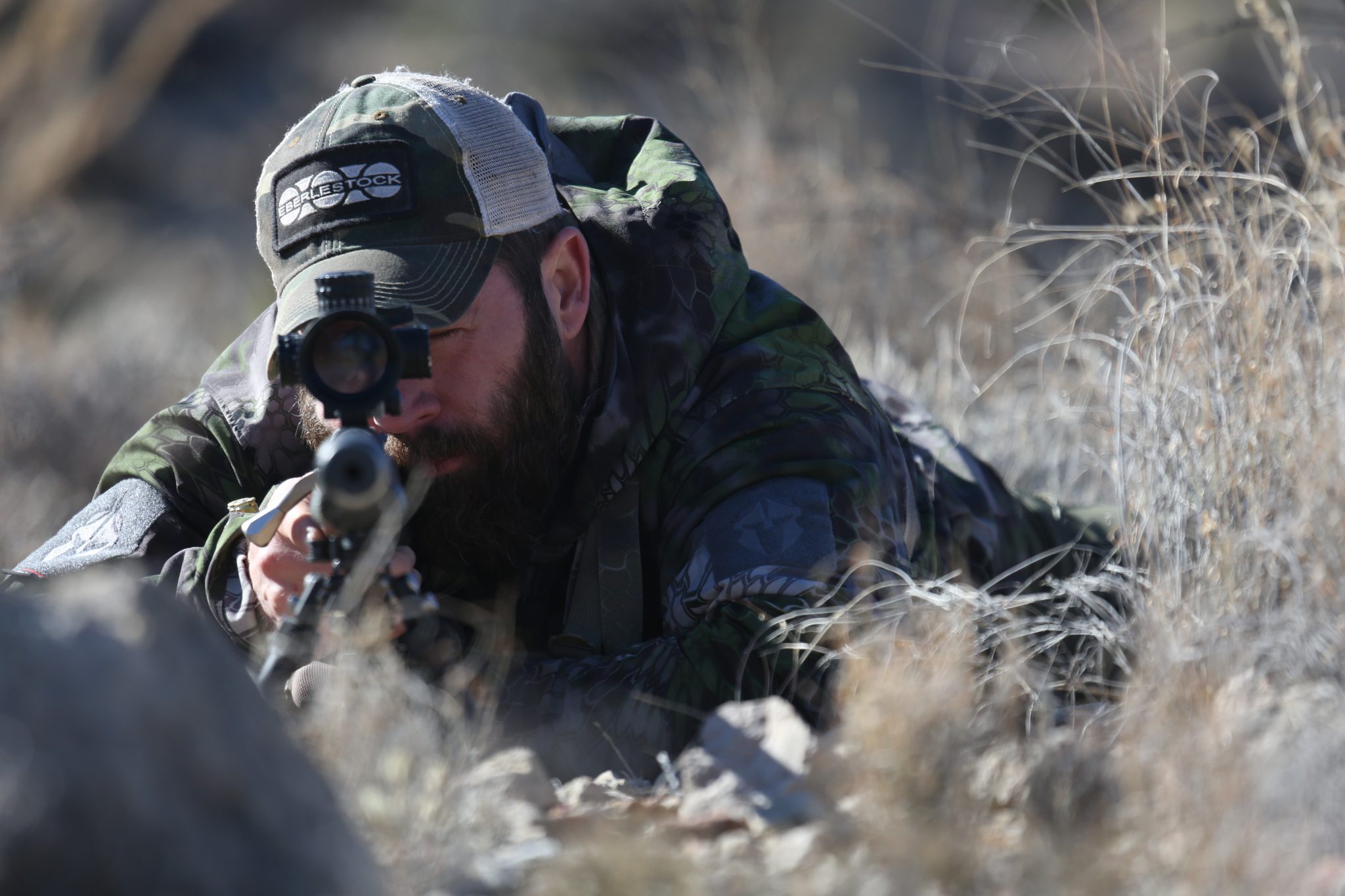
The hunt was on. Years later, Lynch recounted on a podcast with Andy Stumpf the ambush and 21-day horror of being moved around by the Iraqis as they tried to avoid US detection. She talked about being held in a large building off the highway, in the dark, for 24 hours. She described the structure well enough that Houin and other members of the task force know precisely where she was all these years later.
“We drove by it because we had a report that there might have been something there,” he says. “There was no action, so we kept going. We never went inside. If we did, she would have been there. We were 100 yards away.”
On April 1, 2003, JSOC Task Force 121 launched a nighttime raid on a hospital where intel said the Iraqis had brought her. Houin was on overwatch covering the assaulters going in, watching the action unfold through NODs. The assaulters met no resistance and found Lynch conscious in a hospital bed. One of them draped her in an American flag — an image shown around the world.
As they evacuated her, a convoy of Rangers rolled in to secure the building. From his rooftop vantage, Houin had noticed freshly dug dirt on the grounds beside the hospital. He got on comms and called for them to stop. They were rolling right at the broken earth. It was a tense few seconds. He watched them stop short of what was found to be the resting place of nine American soldiers.
(Two weeks after the Jessica Lynch raid, Special Forces captured Abu Abbas, the Palestinian mastermind behind the Achille Lauro hijacking. It closed a chapter on that otherwise open case. Later, Abbas died in captivity.)
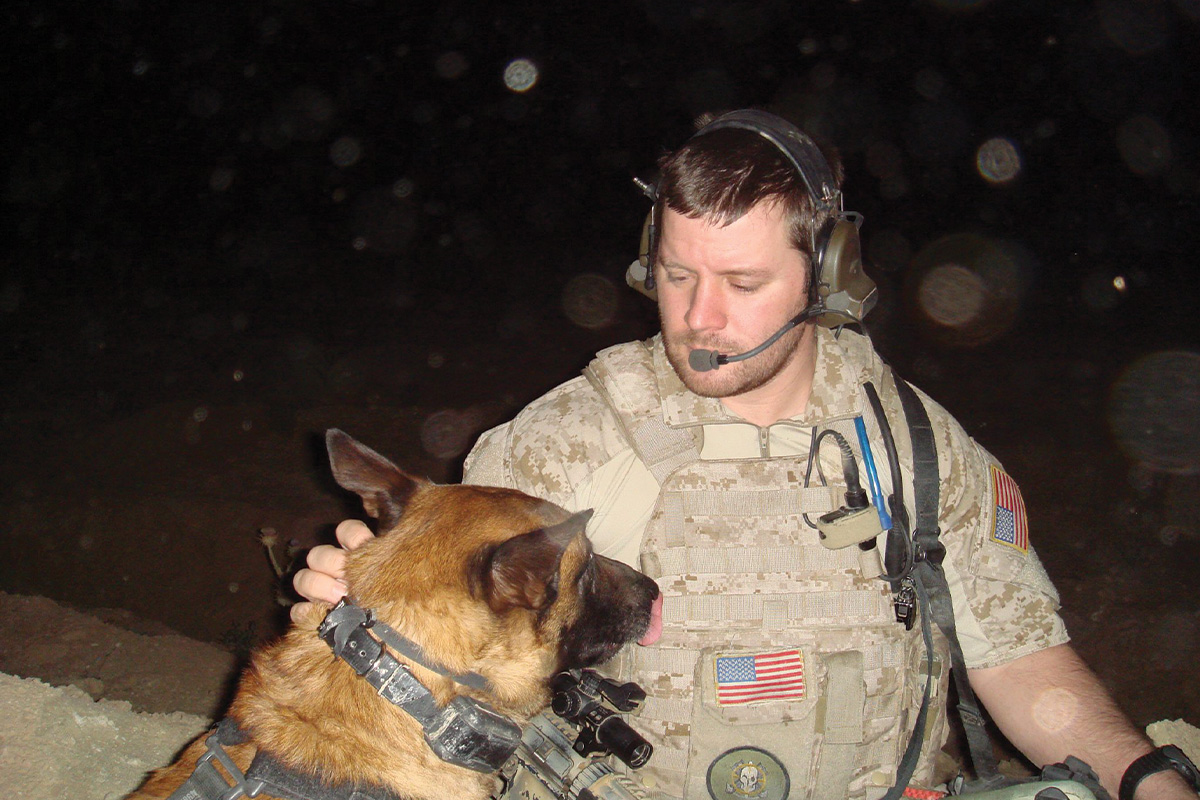
On April 23, Houin turned 30. As a leader on Gold, his new mission was hunting deck of cards guys — or very high-value targets — around Baghdad. To maintain low visibility, they stole a bunch of rental cars from a lot next to the airport.
They found a target and trailed him, driving through the city. All of a sudden, the car took off. The guy sped through the street, taking hard corners. “Something’s up,” Houin said to his teammate, Jeff, who was riding shotgun in the rental. They parked, and Jeff started working the radio, their car still running.
Then, a knock on the window. Houin looked over, and an Iraqi had a 1911 to his head. The Iraqi started screaming, and Houin put his hands up.
“Hold on, man. Hold on,” he said. “You can have the car.”
Houin opened the door to get out and caught the Iraqi’s eyes, big as saucer plates. The Iraqi noticed Houin’s recce-build M4, the body armor. He clearly had picked the wrong dude to carjack. The pause gave Houin just enough space to throw the car into gear and step on it. They raced 20 yards up the street, and Houin cut the wheel, spinning around toward the Iraqi and his buddy. Jeff was out the window now, M4 up. The carjacker dropped in the street.
They got back on the radio to report troop contact. There was much confusion. Who? Where? Did you get the target? The SEALs tried to explain, unsure of who they’d killed. Command told them to bring the body back for ID. They hoisted the carjacker into the trunk. To this day, Houin remembers the smell. “Human blood is just nasty,” he says. “Irony.”
Back at base, it took some unfucking, but it finally became apparent the guy was a local street thug. He had noticed the rental car plates and figured it safe to steal — even in this war zone.
“Back then, after that first Iraq deployment, I tried to shut down and shut off when I got home, I didn’t talk, but I think all that just made me more of an asshole.”
In December 2020, Houin told that story on the Mike Drop podcast with Mike Ritland. Houin’s wife downloaded the episode and listened.
“There’s not much in my career she doesn’t know, but I had never told her that one,” Houin tells me.
“Was she upset that you guys killed the dude?” I ask.
“No. No. He was a shitbag. He made the choice to pull a gun on us. I think she was concerned that it happened, and I never said anything. She knows what I did, what I was doing, is inherently risky, but a guy holding a gun to her husband’s head? If he had been more of a shitbag or more ruthless, he would have shot me and ran. Back then, after that first Iraq deployment, I tried to shut down and shut off when I got home, I didn’t talk, but I think all that just made me more of an asshole.”
When he came home from that deployment, Houin’s marriage suffered. His first daughter was born that summer. He sat out a deployment to be home with mom and baby. For their entire dating life and the first few years of the marriage, Houin was away 200 days a year.
His wife, and the household, effectively developed without him. He didn’t make it to many birthing classes or doctor’s appointments. Now, home with a newborn, it was a dark time. Houin drank. Things got worse when he heard the news that his friend and teammate, Dave Tapper, was killed in action when his convoy was ambushed outside Paktika province, Afghanistan. Tapper had taught Houin how to play chess in Baghdad.
This was the deployment he’d sat out, and his buddy got killed. The feeling gnawed at him. After that, he promised himself that he wasn’t ever going to sit another deployment out. So long as he had that Trident, he was going.
Houin did several deployments to Iraq and Afghanistan after that summer of 2003, but things didn’t get spicy again until 2005-06. This was the dawn of a new iteration for JSOC and its Tier 1 operators.
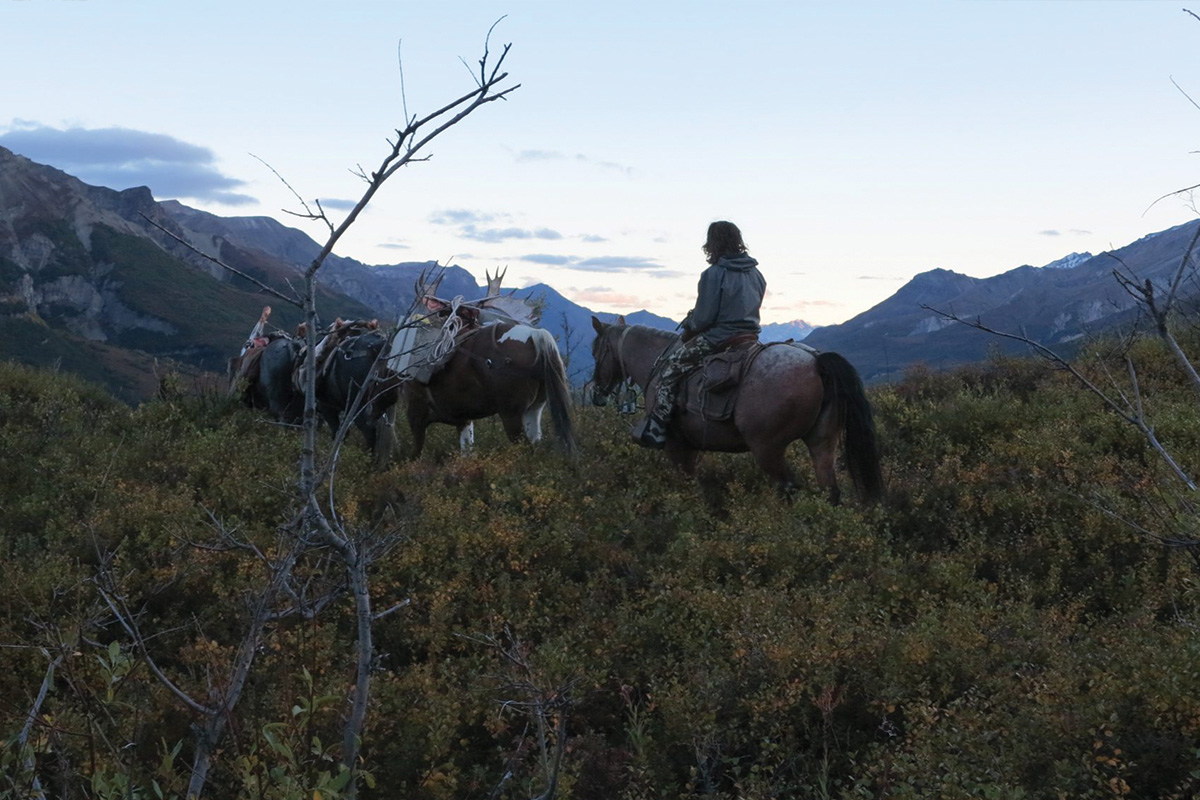
Intelligence collection had hit its stride. High-value targets were identified with frequency. The enemy knew this, and the enemy feared them. The green-eyed men were coming: operators moving in the dead of night, under NODs, taking compounds and bad guys with flex cuffs or bullets. The Global War on Terror had taken a turn, and operators like Houin were ready to work.
We’re driving from San Antonio to West Texas in something like a road trip through the Lone Star State. We started in deer camp outside Dallas, then drove to SATX for some steel target shooting at the Black Rifle Coffee Company ranch. We’re pushing west now, for an aoudad hunt and long-range shooting event with some other veterans. “A lot of this stuff you have to take with a grain of salt,” Houin tells me.
“What do you mean, grain of salt?” I ask him.
“My memory is shot. Before I got out, they did a full workup, brain scan, and found six scarring events — that’s what they call them — like TBIs, concussions, getting my bell rung, whatever.”
“Do you remember all six of them?”
“Not like one, two, three, four, five, six. A lot of them, it feels like Rat was involved.”
“Rat?”
Senior Chief Thomas A. Ratzlaff was something of a legend within Houin’s squadron and the larger SEAL community. He was Houin’s partner on much of his Gold sniper-recon work. The Arkansas native loved to hunt and fish, and they immediately hit it off.
In 2005-06, during Houin’s first season as a green-eyed body snatcher, the op tempo was high. Seventy-five high-value targets taken in 75 nights was common for the DEVGRU SEALs and other JSOC units. The op tempo had changed dramatically from the early days of Afghanistan camped on a mountain for weeks at a time.
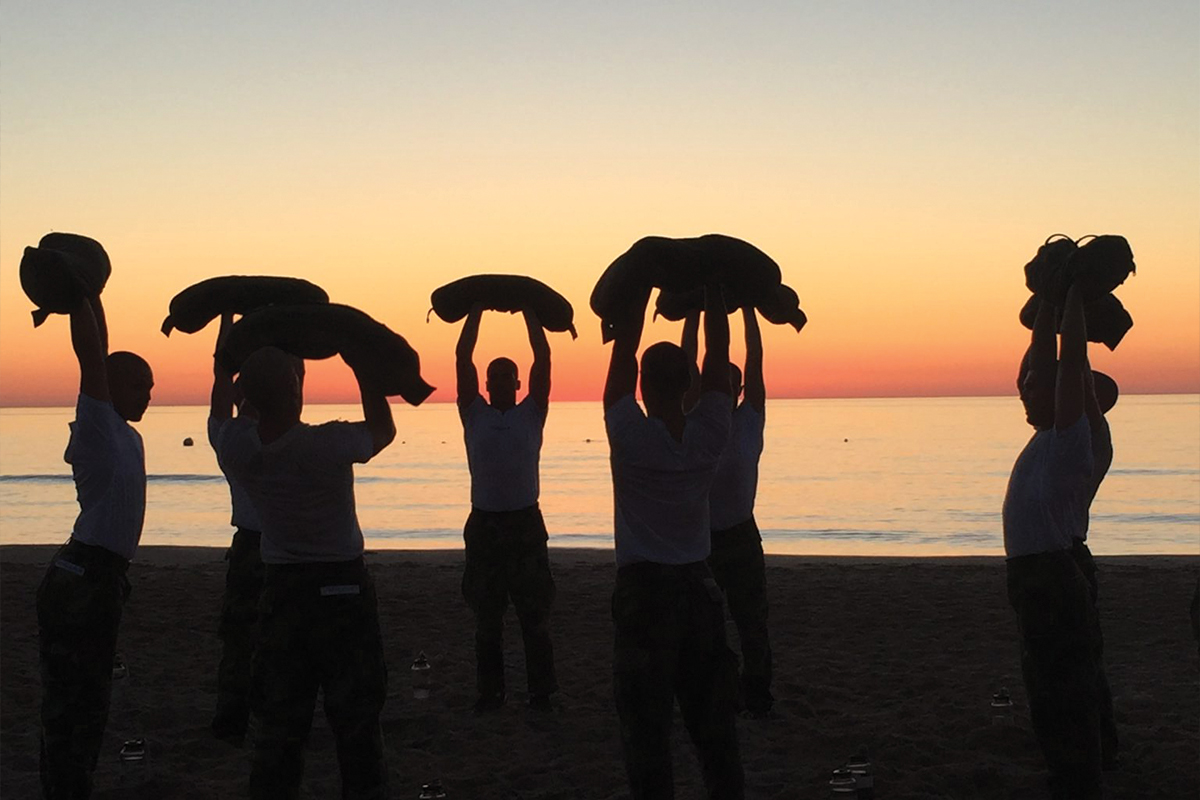
During this period, Houin was climbing up a wall, and a Canadian breacher blew a door early. Houin woke up on the ground with Rat slapping him. “Hey, hey? You okay?”
Another time they were running through a dust cloud from the helicopter to target, and all of sudden — boom! — lights out. Houin came to at the bottom of a cistern, a 12-foot-deep water catch, about 6 feet in diameter, that Afghans use to collect rainwater. Houin was flat on his back looking up, and Rat’s mug popped out at the top of the well. “Get me the fuck out of here,” Houin said.
One night, Rat and Houin were the overwatch for a troop hitting a compound. They snuck in under the cover of darkness and looked for high ground to get up and provide sniper cover for the assaulters taking the door. The compound had mud walls, and there was a ladder nearby. Houin grabbed it and scurried up, but — “short guy problems” — he was too short.
He got down and pointed, and Rat headed up the ladder and over the wall, then reached down to pull Houin up. They’d gotten to the second floor when the breach team woke up two Taliban 20 feet from their position.
“We took care of the problem” is how Houin puts it.
It was Houin’s first real up close and personal encounter. The Taliban died loudly, so Houin and Rat moved into the building, clearing it before the assaulters had time to take it.
“What was that like?” I ask him. “Killing a guy so clear, so close?”
“I don’t think we ever talked about it,” Houin tells me. “My thinking has always been, if I’m in your doorway in the middle of the night, you’ve done some really bad shit. So, it was never anything we reflected on. I’m good with it.”

In Iraq in 2007, again with Rat, another gunfight stood out. The task force was breaking down an IED network in the west. They had rolled much of it up, and intel brought them to a palatial compound with four houses and a mosque, which was off-limits.
Houin and Rat worked through the tall grass toward a corner of one of the buildings. Ten or 15 assaulters trailed behind them. Houin was in comms with the eye-in-the-sky, which worked to identify hostiles on the ground.
Heading in, all was quiet, but then Houin says his “Spidey sense started to tingle.”
The assaulters moved in about 100 yards from where Houin and Rat were covering. That’s when Houin realized he’d pointed them at the wrong building. Three bad guys came racing around the corner with AKs toward the sound of the breach. Houin spun around in what he can only describe as a flow state. The world slowed down into nanoseconds — fractions feeling like minutes. “It’s hard to explain to people who haven’t been there,” he says. “But, your vision goes wide and flat, like in a video game, like you can see more. Time slows down.”
Houin engaged. The three guys went down but crawled off and around the corner, humped up all arch-backed like a badly hit deer. Rat came running toward Houin at the sound of fire. They cleared the corner. Two guys lay dead outside. The other was nowhere to be seen. “As he made it in the building, it drastically increased the threat level,” Houin says. “We had a bad guy who’s awake, armed, and knows we’re there.” They took a 10-second pause, then crashed in. The third man had died on the stairs.
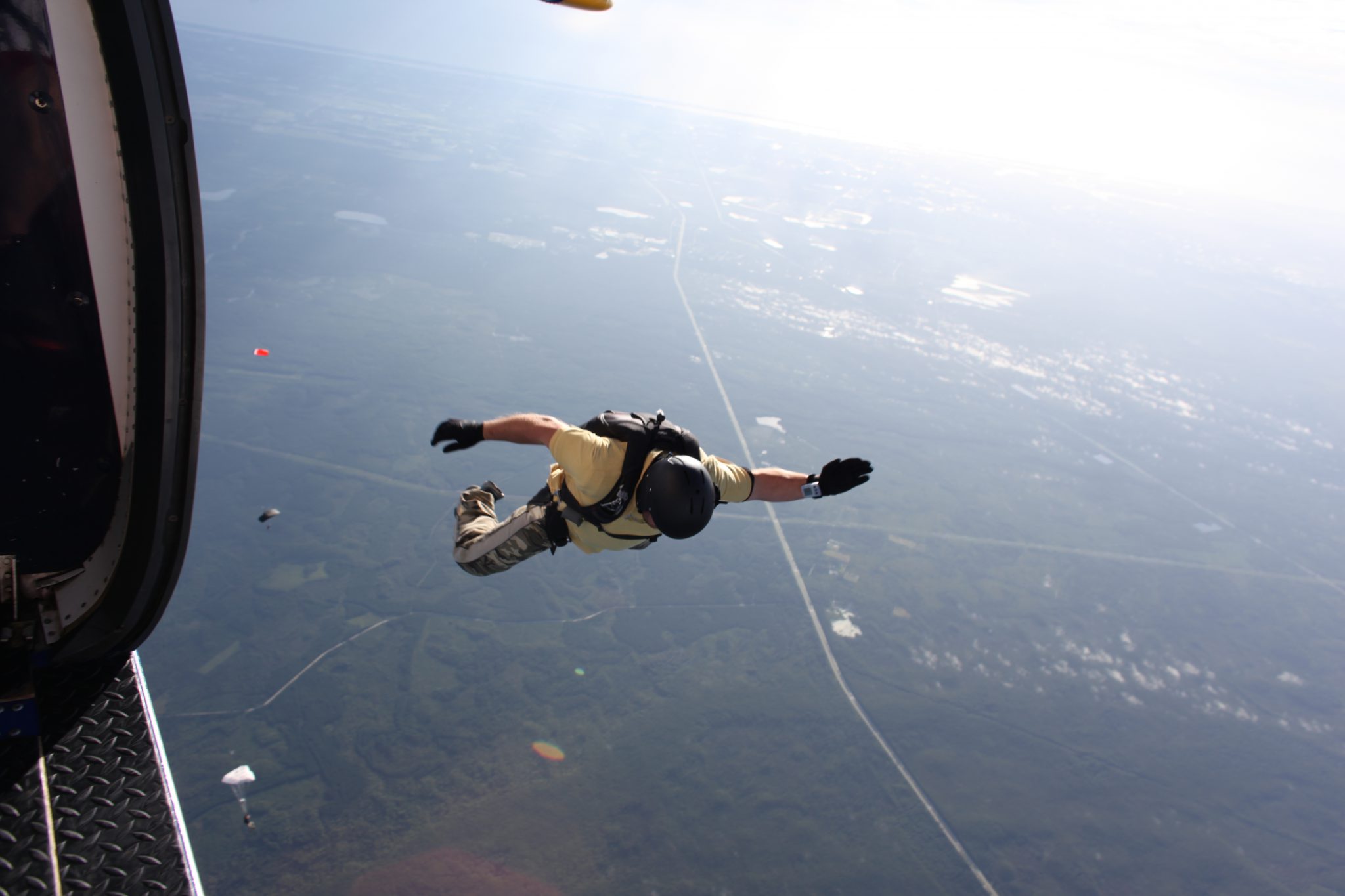
In 2010, Houin was on a mountain training exercise in Alaska. The Navy at this time was flying SEALs into Alaska and hiring sheep guides to take guys through the basics of how to move and survive at elevation. “Rat set this whole thing up and planned it for sheep season,” Houin says and laughs.
When Extortion 17 went down, killing 30 US service members, including Ratzlaff, Houin and the guys of Gold were devastated. Lt. Cmdr. Jonas Kelsall, whom Houin had worked with closely during the Captain Phillips mission, and other undisclosed assignments worldwide, also died.
“I was home,” Houin remembers. “I just came back from Africa on a deployment. I got a call from one of the guys, and he’s like, ‘Hey, did you see the news?’ I’m like, ‘No, I’m fucking home, and I don’t watch the news.’ He told me on the phone what happened.”
“Everybody?” Houin asked him.
“Everybody.”
We’re in Marfa, Texas, now and have stopped at a liquor store to get a bottle of bourbon for our next hunt camp host. Houin turns the truck off, and we just kind of sit there.
“It’s combat,” he says. “The enemy gets a vote.”
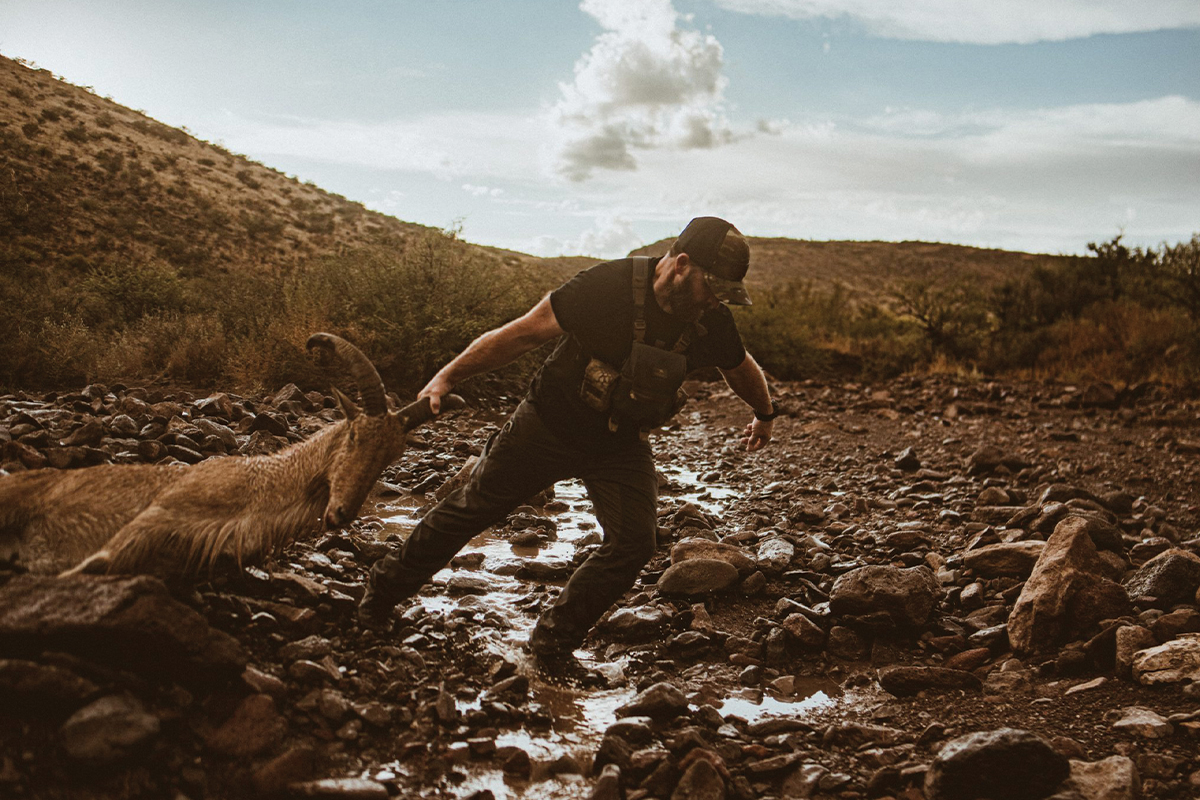
Floating off the east coast of Africa, there was a Somali interpreter aboard the Bainbridge, but none of the ship’s crew or the SEALs that jumped in had any experience in hostage negotiation. On the bridge, they tapped an expert with the FBI in Washington, DC, and a game of telephone developed. The pirates in the lifeboat with Phillips would make a demand over VHF radio. The translator would translate, and Houin would tell the FBI agent on the phone, who’d relay the response for the translator to speak back at the pirates.
To get eyes on the lifeboat, the SEALs put on Navy blues like they worked aboard the ship and took a Zodiac rigid inflatable boat to the pirates with a delivery of food and cigarettes. From there, the plan to kill the three pirates with sniper fire unfolded.
By the time Red Squadron jumped in, Houin had been awake for two days, so he hit his rack and crashed. When he woke up around midnight, snipers were setting up on the fantail, and so did he. Maybe 20 SEALs milled around. Six snipers were on rifles, two per pirate. There was no countdown or command fire. “Two guys were up, and we’d talk — got him, got him, nope — then they were down again,” Houin remembers. “It went on like this for a while.” Finally, the pirates presented themselves in triplicate. That was all it took. Houin and the Red Squadron snipers double-tapped their targets, head shots all around.
In the Tom Hanks movie, brain and blood and skull fragments blow all over Captain Phillips. Rescued and aboard the ship, Hanks as Phillips has an emotional breakdown from all that trauma, like an actor going all in for an Academy Award.
“I don’t remember that,” Houin says. “He was a pretty squared-away guy.”
“Honestly, it was lifesaving, definitely was one of the more significant things I’ve ever done as far as figuring out what was wrong with me.”
Houin connected Phillips to a SEAL team psychologist in Virginia for a phone call. Then he and the captain sat around and played Monopoly on the two-day steam to Mombasa.
From this time through 2015, Houin worked as a team leader for DEVGRU’s secretive intelligence squadron. What he did, and where he did it, he cannot say. He left Gold Squadron with the rare distinction of never coming back with a teammate dead or seriously injured. “A lot of that is luck,” Houin says, “but I’ll take it.”
In 2015 he started to think about his offramp from the Navy. He took a job in Chicago at Naval Station Great Lakes, running a pre-BUD/S workup for aspiring SEALs — not unlike that poster SEAL with the porn star mustache who closed the deal on Houin’s enlistment, then showed him how to get in shape for the teams.
Great Lakes allowed Houin and his family to move back to his hometown in Indiana, not far from where his wife grew up in Ohio, to help care for aging parents. His girls graduated high school there, and he helped out on their swim team. Around this time, he went to the National Intrepid Center of Excellence or NICoE, part of the Walter Reed system, which has the tagline, “Hope, Healing, Discovery, and Learning for Traumatic Brain Injury and Associated Health Conditions.” Houin says it’s one of the best things he’s ever done, and he’s become a big advocate for the program within the SEAL community.
“Honestly, it was lifesaving, definitely was one of the more significant things I’ve ever done as far as figuring out what was wrong with me, to understand the triggers and understand what the pace of the job, for as long as I did it, really did to me,” he says.
The term now used for this is “operator syndrome,” which presents a constellation of unique medical and behavioral conditions that significantly affect our special operation forces. A study from the National Institutes of Health lists conditions like “traumatic brain injury effects; endocrine dysfunction; sleep disturbance; obstructive sleep apnea; chronic joint/back pain, orthopedic problems, and headaches; substance abuse; depression and suicide; anger; worry, rumination, and stress reactivity; marital, family, and community dysfunction; problems with sexual health and intimacy; being ‘on guard’ or hypervigilant; memory, concentration, and cognitive impairments; vestibular and vision impairments; challenges of the transition from military to civilian life; and common existential issues.”
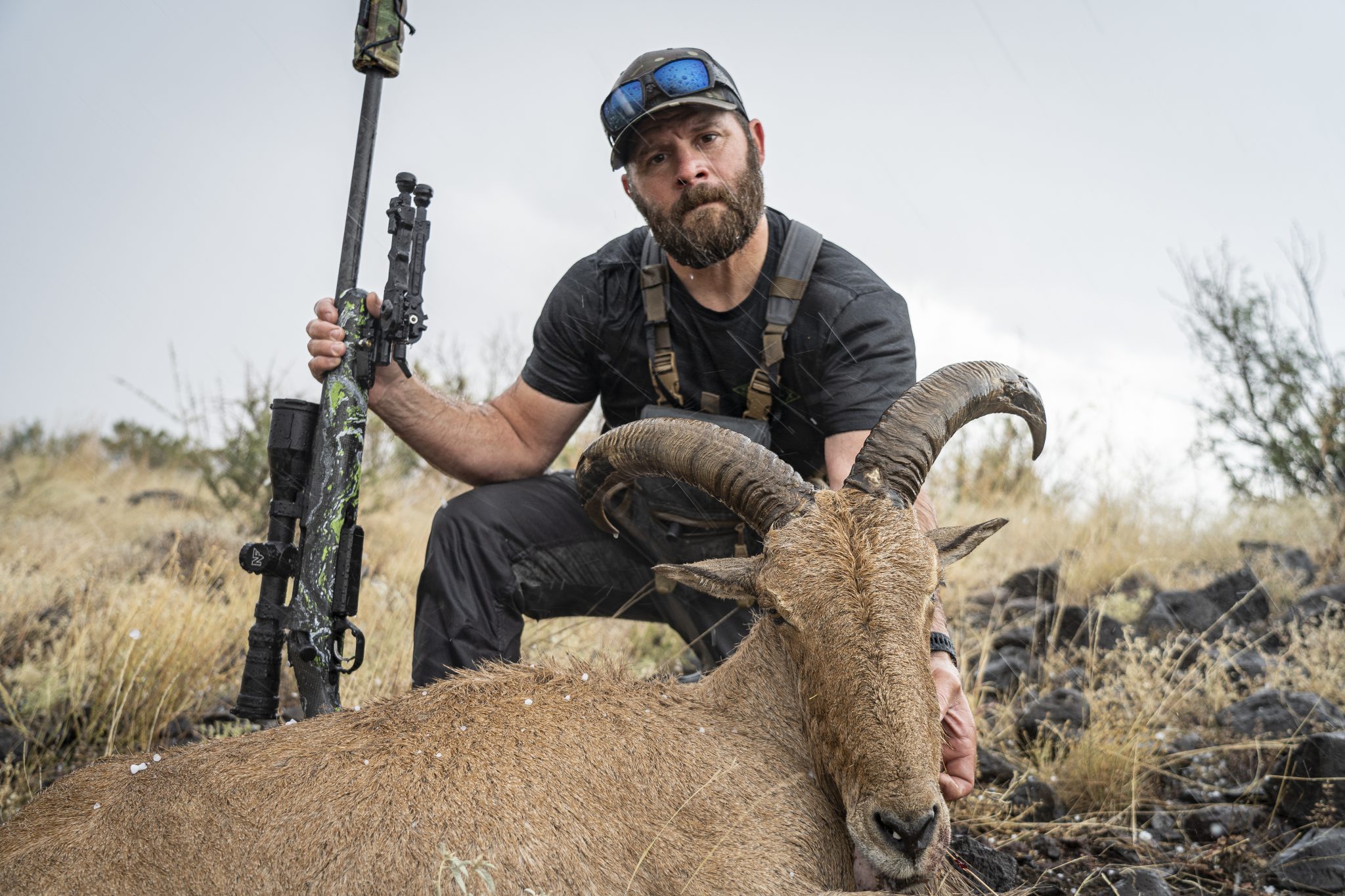
Not every operator checks every box, but many warfighters contend with a lot of that list. NICoE helps identify what boxes are checked, Houin tells me, through a head-to-toe workup of brain and body scans, bloodwork, therapy, and behavior modification techniques.
After his official retirement in 2018, things changed even more dramatically. “Everything I knew, who I was, was a SEAL,” he says. “Now, it’s like, I have all this time.” Houin puttered around. Coached swimming. Then realized he could put together his first love — hunting — with his second love, helping veterans. One of the things he most missed was hanging out with his teammates, reminiscing, telling stories, connecting. Hunt camps could provide that — ex-operators sitting around campfires rather than ready rooms.
Cibolo Creek Ranch is a sprawling 38,000 acres of rough country crawling with aoudad just south of Marfa. The five-star accommodations are so nice that when the crusty master chief, a sloppy writer, and a bloodthirsty, bowhunting scout sniper walked in, we all felt a little out of place.
Through the ranch’s new hunt manager Aaron Stech, Houin is working to open the place up to veterans and active-duty teams looking to train in this big country.
“Wait until you see it,” Stech beams as we bounce down a dirt road far away from everything in a decommissioned Humvee, toward the brand-new 1,000-yard rifle range they built. It’s something of a shooter’s paradise — steel every 100 yards out to 1,000, with plenty of hillsides to stretch that to a mile and beyond. No one has shot it yet, and after we unload the rifles, Stech says, “Terry, you’re up.”
Houin confirms his .300 PRC at 100, then connects at 500. His first shot at 1,000 rings steel like a distant bell touched off over mesquite country. It’s the first time anyone has shot the range — a christening, of sorts, and it doesn’t go unnoticed. Stech throws his arms out wide as if to take it all in.

“We’re calling this place ‘Gold Range,’” he says.
An Army vet with us, who never much shot distance after the service, takes a lesson from Houin, and connects for the very first time at 1,000, too. Some other hunters in camp come out and stay for dinner. They just want to meet Houin, to shake his hand.
“What’s next for you?” I ask him after the meal.
“I want to help vets,” he says. “I want to host events like this, bring them out, get them shooting, get them hunting, get them talking.”
“There’s a power in all this.”
“Whenever I came back from deployment, if the season were right, I’d go off elk hunting or sit in a treestand for a week, just to downshift, get everything right. The transition is rough for a lot of guys — it was rough for me. This kind of thing can help it. Give guys this experience.”
“Maybe tomorrow we’ll get an aoudad,” I say. “Whet their appetite, so to speak.”
“You can bet your ass we’re gonna get a fucking aoudad.”
This article first appeared in the Winter 2022 edition of Coffee or Die’s print magazine as “Hunter Frogman Sniper Spy.”
READ NEXT – Sheep of a Lifetime: Kyle Lamb Tags Idaho Bighorn

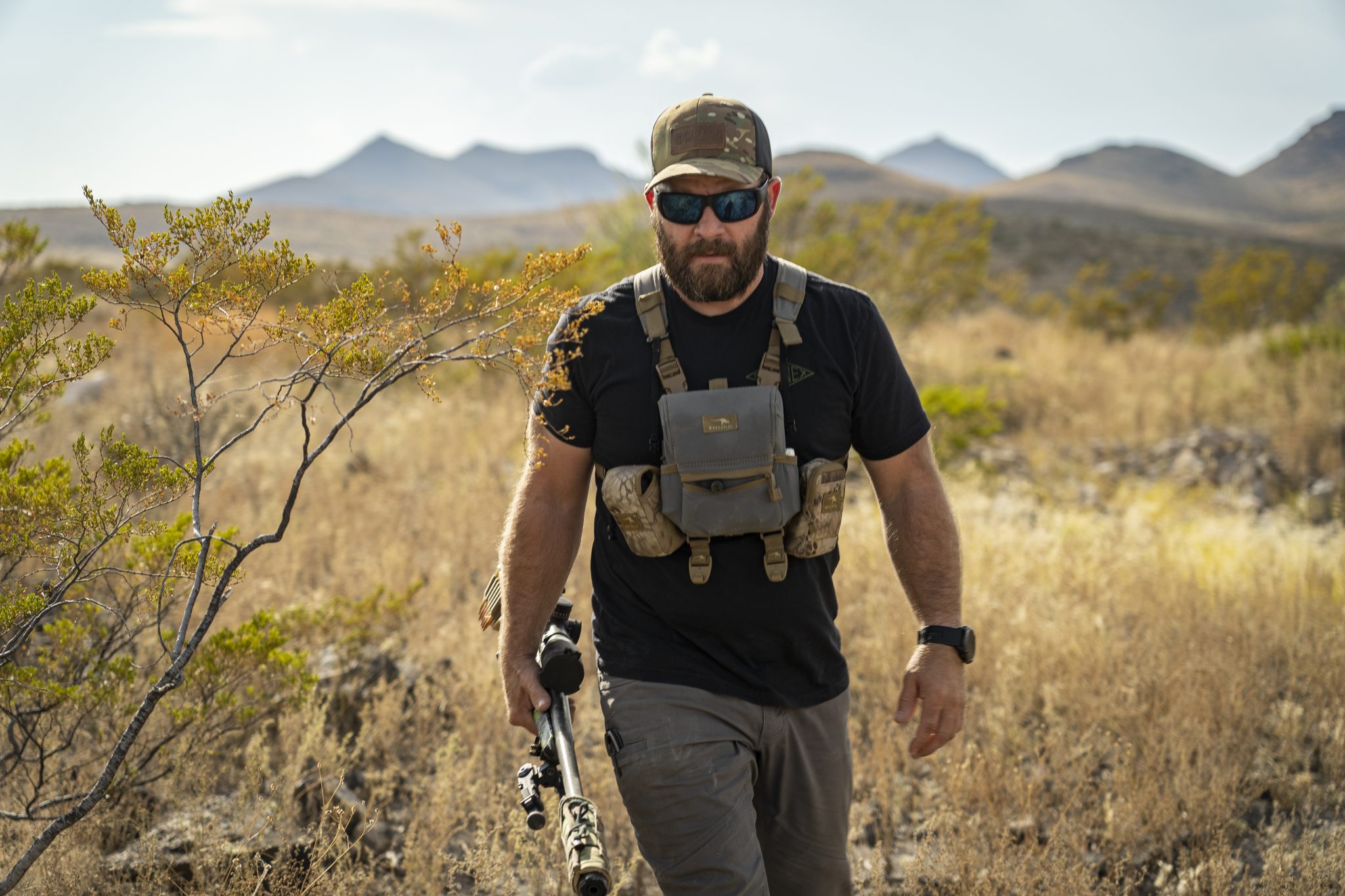






Comments